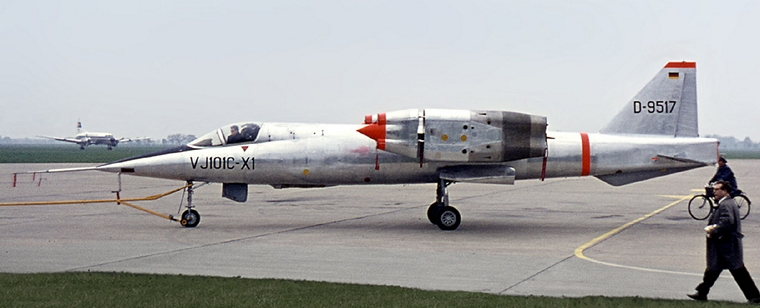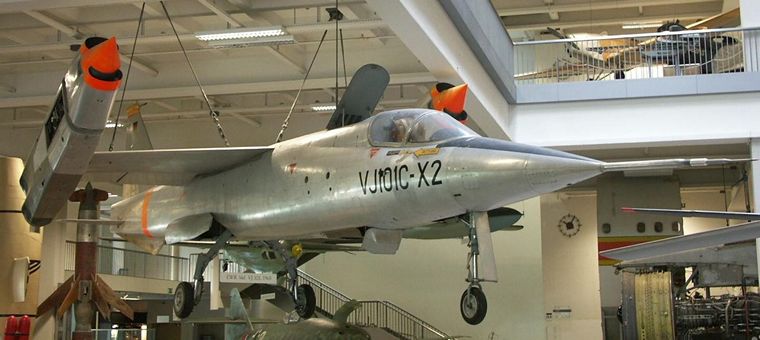EWR VJ 101-THE WORLD'S FIRST SUPERSONIC TILTJET
By Willie Bodenstein

The EWR VJ 101C X-1. Photo Ralf Manteufe commons.wikimedia.org
The EWR VJ 101 was an experimental German jet fighter VTOL tiltjet aircraft. It was to be the basis for a successor to the F-104G Starfighter, but was cancelled in 1968 after a five-year test program, during which two prototype aircraft were built. The VJ 101 was one of the first V/STOL designs to have the potential for eventual Mach 2 flight.
Heinkel and Messerschmitt had developed designs to meet the requirements of VTOL flight and by 1959, the two companies, along with Bölkow, had created a joint venture company called EWR, to build the VJ 101 C. The new proposal merged the characteristics of earlier Bölkow, Heinkel and Messerschmitt designs into a sleek, streamlined platform. The VJ 101 was similar in appearance to the Bell XF-109, both with rotating engines in nacelles at the wingtips. In addition to the wingtip engines, two further lift jets were installed in the fuselage to supplement the main engines in hovering flight.

Photo Ruth AS commons.wikimedia.org
Two prototypes were built: X-1 and X-2. On 10 April 1963, the X-1 made its first hovering flight. The first transition from hovering flight to horizontal flight took place on 20 September 1963. The X-1 was first publicly exhibited at the May 1964 Hannover Air Show. The VJ 101C X-1 flew 40 aerodynamic flights, 24 hover flights and 14 full transitions. During these tests the sound barrier was broken, for the first time by a vertical take-off aircraft, but on 14 September 1964 a defect in the autopilot caused a crash. On July 29, 1964 the VJ 101 C flew at Mach 1.04 without use of an afterburner.

Photo commons.wikimedia.org
The second prototype X-2 with a new autopilot made a successful transition on 22 October 1965. The tests were subsequently continued with X-2, which in contrast to X-1 had afterburners. However the project was cancelled in 1968. The proposed VJ 101 D Mach 2 interceptor was never built. VJ 101 C X-2 hangs today in the Deutsches Museum in Munich.
|
   |























